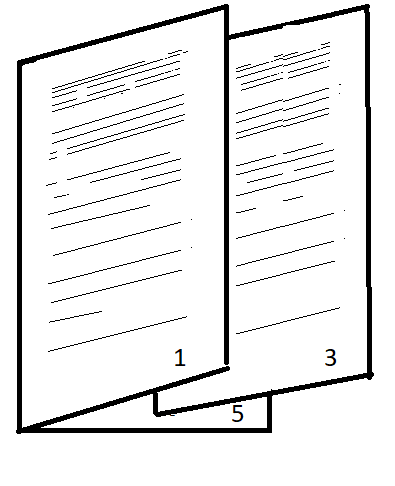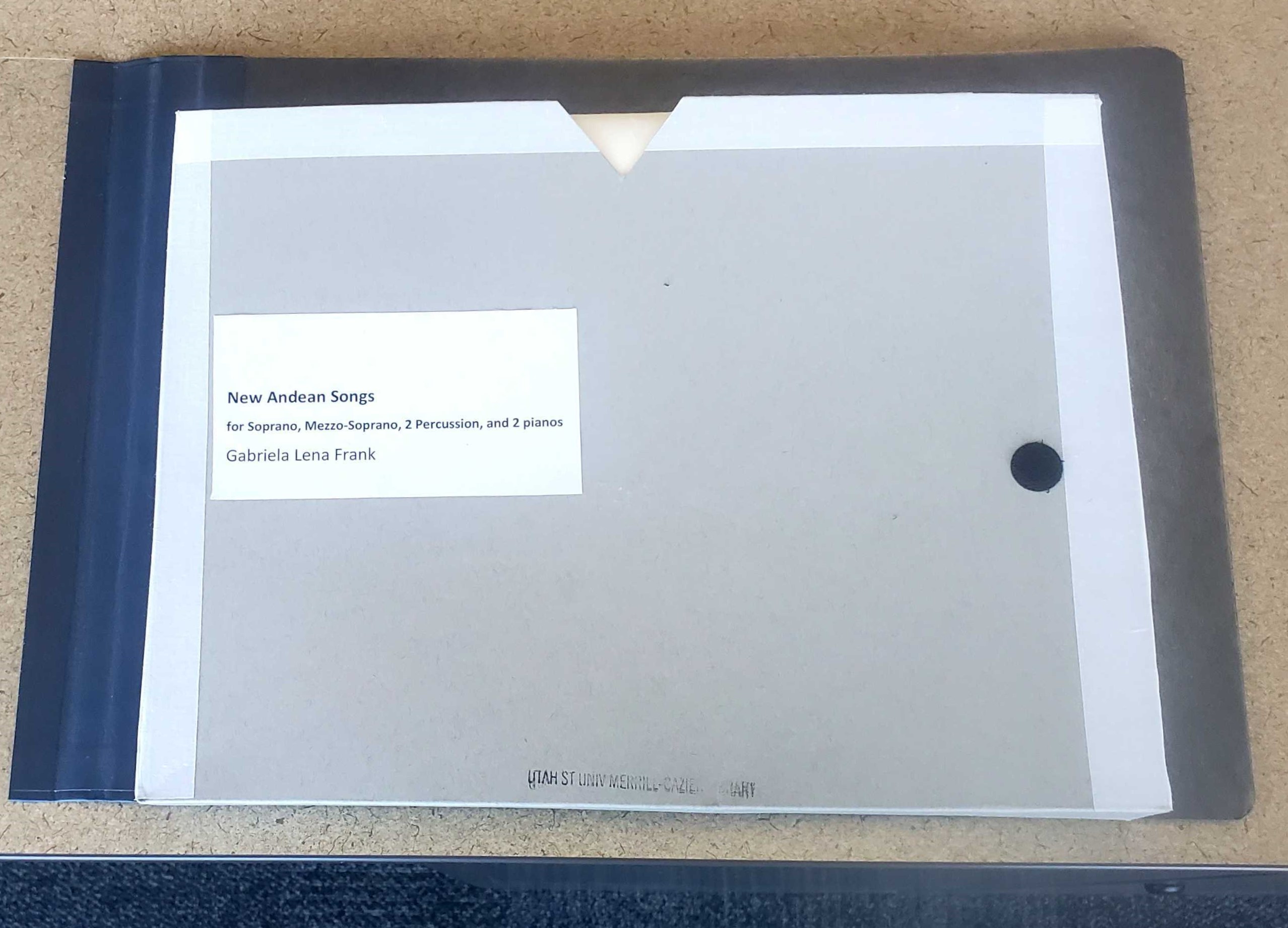Draft: 8/19/2021
(All illustrations by Melanie Shaw; except for the 5 hole binding instructions & making a pamphlet cover instructions, which were created by an anonymous former Art Book Room worker)
...
Parts: if there is more than one instrument or voice:
Are thereseparate parts tucked into the center or back of the score?
Scores with parts will be bound together, will share a barcode, and will be checked out together in Sierra.
While checking for parts, make sure our tattle-tape hasn't been put into the score so as to glue one or more parts to the score. They need to be removeable. If so, carefully unstick glued parts from the score and cover the tattle-tape with opaque repair tape.
Also, watch for scores with an odd number of leaves, which can contain a continuously paged loose sheet in the center of the folio: if loose, attach to the crease of the center fold with clear binding tape.
...
While learning the technique, it is easiest to turn after each set of stitches (shown in figure 4: no.1-5). Pull the thread tight while making the stitches, being careful to pull along the spine, instead of right angles.
...
6. Make sure all sewn stitches are tight, then, you can either tie the first & last threads together (figure 3, diagram), OR tie a knot to the center stitch (figure 4, step 5); then trim excess thread off, leaving about 3/4 to 1 inch thread.
...
Here are a few folded pockets for holding parts, or scores plus parts.
...
Simplest Pocket for a thin part:
Pattern for a simple pocket, best folded from strong, but not card-weight, paper or Tyvek (if you can find it). I have used this pocket for fairly thin parts with a score, or for pockets inserted into the back of a fairly large thick score itself:
...
| View file | ||
|---|---|---|
|
Strong pocket for several thin parts
...
Spread glue over the entire back to the pamphlet binder, and press the pocket into place on the pamphlet back. Wrap the parts with wax paper and insert them into the pocket, then press everything in the pamphlet binder overnight with heavy book or brick on top.
Simple Slipcase/Pocket:
Requires archival, permanent, double-sided tape.
...
For bulky paperback scores or spiral/comb scores plus parts. The flaps are taped together (in the order of folding) with archival permanent double-sided tape. Cut a notch in the front to allow for easier removal. These measurements fit our most common size of score and pamphlet binders (the thickness will vary).
Warning: I discovered this is slipcover can be easy to pull apart:
However, since the folded edge is the strongest, it can still be used, if turned so the strongest folded side is down; then glued into a wide binder (Based on the slipcase below from CCI.)
Stronger Slipcase/Pocket
The last two flaps are glued to the back with binder glue.
...
Other Enclosures and Boxes
A simple slipcase to stand alone, from Canadian Conservation Institute:
...
We possibly could make this one from a strong cardboard.
...

